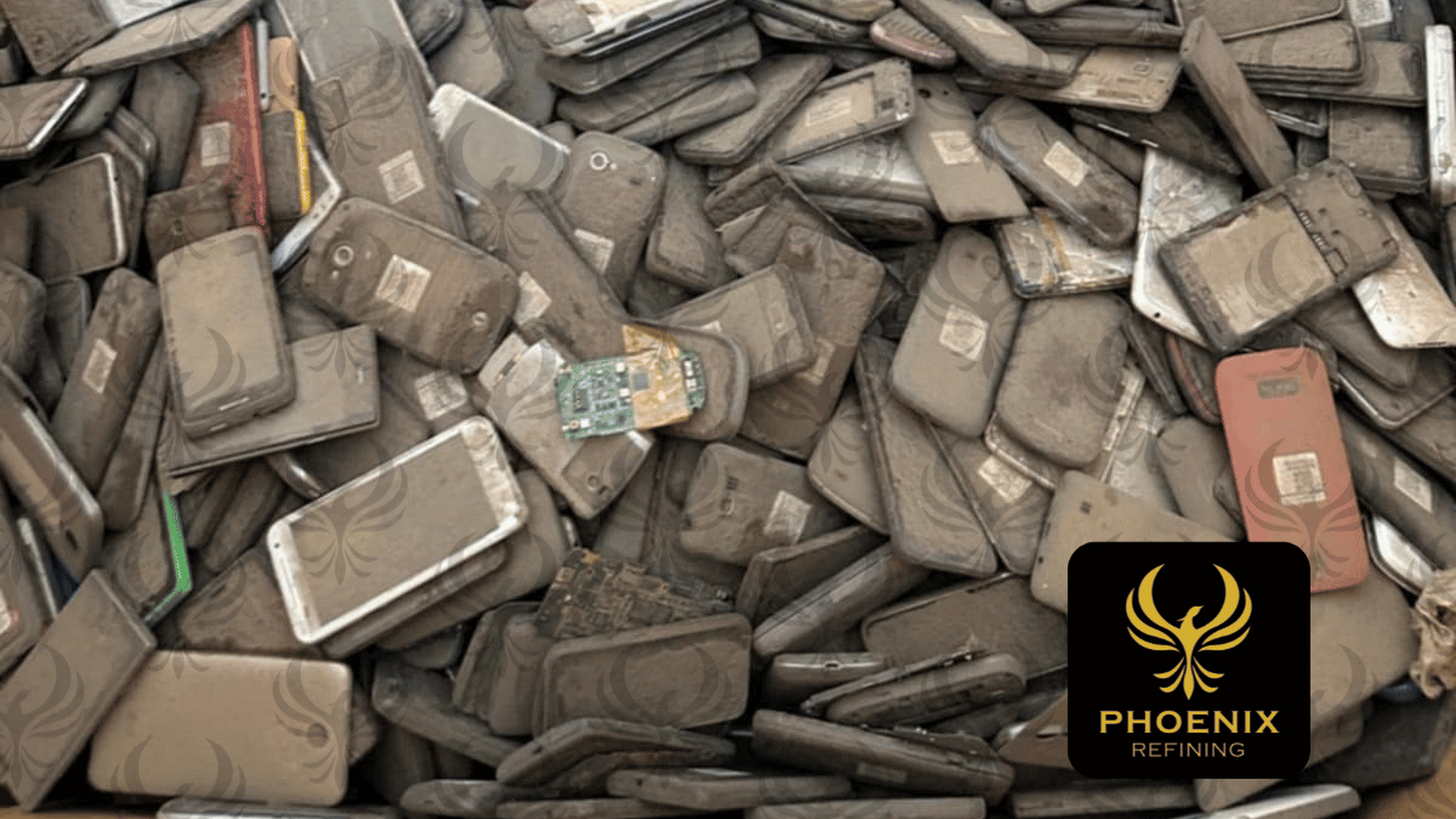

With the rapid advancement of technology, mobile phones have become an integral part of modern life. However, their increasing production and disposal present significant challenges in waste management. End-of-life mobile phones (EoL-MPs) contain a rich mix of valuable metals, making them a prime target for urban mining. Effective recycling of these devices is crucial for resource conservation, environmental sustainability, and economic viability. This study explores a scalable method for metal recovery, emphasizing the importance of automation in pre-processing to improve efficiency and reduce costs.
Mobile phones contain a wide range of metals, from bulk materials like iron, aluminum, and copper to high-value elements such as gold, cobalt, platinum, and palladium. These metals are distributed across different components, mainly within the main body and the battery. The main bodies of mobile phones contain an average of 279 grams of metal per kilogram of waste, with iron, aluminum, and copper being the dominant elements. The finer fractions of these materials, however, contain higher concentrations of precious metals such as gold, silver, and palladium. The economic value of metals in the main body is estimated at $13.41 per kilogram, with gold contributing significantly due to its high market price.
Batteries contain an even higher metal content, accounting for 524 grams per kilogram of waste. Aluminum, copper, and cobalt are the primary metals found in this component, with cobalt being the most valuable. The total economic value of metals in batteries is estimated at $11.36 per kilogram, with cobalt contributing $5.70 per kilogram and gold adding $3.43 per kilogram to the overall value. Although gold represents only a tiny fraction of the battery’s composition, its high market price makes it a crucial element in the economic assessment of mobile phone waste.
The metal recovery process involves shredding and sieving to separate different material fractions, each with distinct metal compositions and economic values. In the case of main bodies, the largest fractions, those exceeding 7 mm and 4 mm in size, retain most of the material and contain the highest concentration of metals, approximately 100 grams per kilogram. However, these fractions are primarily composed of iron and aluminum, making them less valuable per kilogram despite their abundance. The finer fractions, particularly those below 0.125 mm, contain the highest concentrations of precious metals, making them the most economically significant for recovery. Gold, in particular, is enriched threefold in the finest fraction, highlighting the importance of precision separation techniques.
In the battery fractions, a similar trend is observed. The coarsest fraction, exceeding 7 mm, contains 120 grams of metal per kilogram, primarily aluminum, which holds relatively low economic value at $0.93 per kilogram. The finer fractions, especially those below 0.5 mm, are richer in cobalt and gold, making them the most attractive for recovery. The finest fraction, below 0.125 mm, has the highest economic value, estimated at $2.70 per kilogram, due to its significant cobalt concentration. These findings suggest that urban mining efforts should focus on fine-sized fractions for the recovery of precious metals while still reclaiming bulk metals such as copper and aluminum for sustainable material use.
Traditional recycling methods rely heavily on manual dismantling, which is both time-consuming and costly. The cost of manually separating different parts of a mobile phone ranges between $1.58 and $7.31 per device, making it a significant barrier to efficient recycling. The adoption of automated processes, such as shredding and sieving, presents several advantages. Eliminating manual labor reduces costs and allows for large-scale processing, significantly improving overall efficiency. The automated method also enables precise targeting of valuable metals, optimizing recovery rates and maximizing economic returns.
Beyond the financial benefits, automated recycling methods enhance environmental sustainability. Improper disposal of mobile phone waste contributes to significant environmental hazards, particularly due to the presence of toxic compounds such as heavy metals. Efficient recycling ensures that these hazardous materials are properly managed, preventing soil and water contamination. Additionally, by recovering metals from waste instead of extracting them through traditional mining, the process reduces the environmental footprint associated with metal extraction, including habitat destruction and carbon emissions.
The total economic value of recovered metals from EoL-MPs is estimated at $11.8 per kilogram, translating to approximately $1.3 per device. These findings highlight the potential of automated recycling as a financially viable solution to the growing challenge of mobile phone waste management.
Metal recovery from mobile phone waste presents a significant opportunity for both economic and environmental sustainability. The study demonstrates that automated processing techniques enhance metal recovery efficiency, maximize economic returns, and reduce the costs associated with manual disassembly. As global e-waste volumes continue to rise, refining and scaling these recycling methods will be critical in promoting a circular economy, reducing reliance on virgin mining, and minimizing the environmental impact of discarded electronics. By improving metal recovery processes, this approach contributes to reducing environmental hazards, conserving critical raw materials, and supporting the development of more advanced and economically viable recycling technologies.